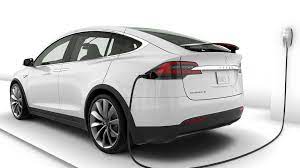Does China Have Better Technology Than the US?
The debate over technological supremacy between China and the United States has become one of the most critical issues in global geopolitics hence the question: Does China Have Better Technology Than the US? China leads advanced technology research in 80% of key areas such as hypersonic speed and underwater drones. For technology-intensive industries, China is simply a better place than the United States.
A report by an Australian think tank shows that the country is ahead of the United States, Europe, and Japan through state-led investment. China has a larger population, cheaper wages, and manufacturers have more government support.
The time to produce chips in the United States is still 25% longer than in Africa, and the cost is 50% higher.
As both nations vie for dominance in various technological fields, understanding their strengths and weaknesses is essential.
This article delves into the intricate aspects of this technological rivalry, examining historical contexts, government policies, key technological areas, research investments, educational systems, and more.
The Global Technology Race
Technological advancement is a key driver of economic growth, national security, and global influence.
The race between China and the United States to achieve technological superiority involves numerous sectors, from artificial intelligence (AI) and 6G to biotechnology and military tech. This competition is shaping the future of global innovation and economic power.
Technological Development
The Rise of China in the Technological Sphere
China’s ascent in the tech world has been rapid and transformative. Over the past few decades, China has evolved from a manufacturing hub to a leader in technological innovation.
Government initiatives, substantial investments, and a vast pool of STEM graduates have propelled China to the forefront of global technology.
The U.S. Legacy of Innovation
The United States has long been a pioneer in technological innovation. The legacy of groundbreaking inventions, from the internet to the microprocessor, has positioned the U.S. as a global tech leader.
The culture of innovation, driven by private enterprise and supported by robust academic institutions, has fostered an environment where technological advancements thrive.
Government Policies and Support
China’s Strategic Tech Policies and Initiatives
China’s government plays a crucial role in its technological advancement. Strategic initiatives like “Made in China 2025” aim to reduce dependency on foreign technology and foster homegrown innovation.
Significant funding, state-backed enterprises, and policies encouraging R&D are central to China’s strategy.
Technologies China has that the rest of the world doesn’t
China is so far the only nation in the World that has implemented quantum telecommunication technology for commercial use.
China has the World’s fastest supercomputer.
China has the best high-speed train technology in the World, and no other country, not even Japan, is set to beat it at the moment.
China is the only nation that has explored the far side of the Moon.
China’s artificial sun is set to be the hottest, beating that of Germany, once it is completed in 2020.
China’s space telescope is set to be the most powerful once completed in 2022.
China has the best forestation technology in the World.
China is the only country in the World apart from the US that has a full fledged IT and AI industry.
China’s military technology is second only to the US.
The might of China isn’t that it possesses a technology no
The Role of the U.S. Government in Tech Advancements
In contrast, the U.S. government supports technology through a more decentralized approach. Funding for research through agencies like DARPA and the National Science Foundation, coupled with policies.
These encourage private-sector innovation and underpin the U.S. tech ecosystem. This approach has historically led to a vibrant and competitive tech industry.
Key Technological Areas of Comparison
Artificial Intelligence: The Battle for AI Supremacy
AI is a critical area where China and the U.S. are fiercely competing. China has made significant strides, investing heavily in AI research and development, with ambitious plans to become the world leader in AI by 2030.
The U.S., with its strong base of tech companies and academic institutions, continues to lead in AI innovation, though the gap is narrowing.
5G Technology: Connectivity Wars
5G technology represents telecommunications, offering unprecedented speed and connectivity.
China, through companies like Huawei, has taken a lead in 5G infrastructure, aggressively rolling out networks domestically and internationally.
The U.S. focuses on innovation and cybersecurity, ensuring that its 5G networks are both advanced and secure.
Semiconductors and Microchips: The Heart of Modern Tech
Semiconductors are essential for virtually all modern technology. The U.S. has traditionally dominated this sector with companies like Intel and Qualcomm.
However, China is investing heavily in developing its semiconductor industry, aiming to reduce reliance on foreign technology and achieve self-sufficiency.
Space Exploration: New Frontiers in the Cosmos
Space exploration has become another arena for technological competition. China has made remarkable achievements, including landing a rover on the moon’s far side and launching a space station.
The U.S., with NASA and private companies like SpaceX, continues to lead in space innovation, focusing on Mars exploration and deep space missions.
Military Technology: Powering National Defense
Military technology is a critical area of competition. The U.S. has a long history of military innovation, with advanced technologies in stealth, drones, and cyber warfare.
China is rapidly advancing its military capabilities, investing in areas like hypersonic missiles and artificial intelligence for defense purposes.
Biotechnology: Innovations in Health and Medicine
Biotechnology is transforming healthcare, with both nations making significant advancements. The U.S.
leads in biotech innovation, with a strong ecosystem of research institutions and companies developing cutting-edge therapies.
China is catching up, focusing on genetic research, CRISPR technology, and large-scale healthcare initiatives.
Consumer Electronics: Gadgets and Gizmos
Consumer electronics showcase the technological prowess of both nations. The U.S. is home to iconic brands like Apple, which set global standards for innovation and design.
China, with companies like Huawei and Xiaomi, has become a major player, offering high-quality, affordable electronics that compete globally.
Tech Giants: A Comparison of Leading Companies
China’s Tech Giants: Alibaba, Tencent, and Huawei
Chinese tech giants have become formidable players on the global stage. Alibaba dominates e-commerce, Tencent leads in social media and gaming, and Huawei excels in telecommunications.
These companies benefit from a large domestic market and significant government support.
American Tech Titans: Apple, Google, and Microsoft
American tech giants continue to lead in innovation and market influence. Apple sets the bar for consumer electronics, Google dominates search and digital advertising, and Microsoft excels in software and cloud services.
These companies drive global tech trends and maintain significant influence worldwide.
Research and Development Investments
China’s Increasing R&D Expenditures
China has dramatically increased its R&D expenditures, focusing on areas like AI, biotechnology, and quantum computing.
This investment is part of a broader strategy to achieve technological self-reliance and global leadership in innovation.
The U.S. Commitment to Innovation and Research
The U.S. remains a global leader in R&D investment, supported by both government funding and private sector initiatives.
Institutions like MIT, Stanford, and major corporations continue to drive groundbreaking research, ensuring that the U.S. remains at the forefront of technological advancement.
Educational Systems and Talent Cultivation
STEM Education in China: A Stepping Stone to Tech Dominance
China’s focus on STEM education has produced a vast pool of highly skilled engineers and scientists.
Rigorous academic programs and government initiatives encourage students to pursue careers in technology, positioning China for continued growth in this sector.
The U.S. Educational Landscape: Breeding Innovation
The U.S. educational system emphasizes creativity and critical thinking, fostering an environment where innovation can flourish.
Prestigious universities and research institutions attract top talent from around the world, contributing to the U.S.’s leadership in technology and innovation.
Intellectual Property and Patent Wars
China’s Approach to IP: Innovation or Imitation?
China’s approach to intellectual property has evolved, with significant efforts to strengthen IP protection and encourage genuine innovation.
However, issues of IP theft and imitation have historically plagued its tech industry, leading to tensions with other nations.
The U.S. Patent System: Protecting Ideas
The U.S. has a robust patent system designed to protect intellectual property and encourage innovation.
This system supports a competitive market where new ideas can flourish, ensuring that inventors and companies receive recognition and compensation for their innovations.
Cybersecurity and Data Privacy
China’s Cybersecurity Measures and Controversies
China’s cybersecurity measures are stringent, often involving extensive state control and monitoring.
These measures aim to protect national security but have raised concerns about privacy and freedom of information, both domestically and internationally.
The U.S. Perspective on Data Privacy
The U.S. approach to data privacy balances security with individual rights. Legislation like the General Data Protection Regulation (GDPR) and initiatives from tech companies aim to protect user data while fostering innovation.
Cybersecurity remains a priority, with ongoing efforts to defend against global cyber threats.
Economic Impacts of Technological Advancements
China’s Tech Boom: Economic Growth and Challenges
China’s technological advancements have spurred significant economic growth, transforming it into a global tech powerhouse.
However, this rapid growth also presents challenges, including regulatory issues, market saturation, and the need for sustainable innovation.
The U.S. Tech Sector: Driving the Economy
The U.S. tech sector is a major driver of economic growth, contributing significantly to GDP and employment.
Innovations from Silicon Valley and beyond continue to shape the global economy, reinforcing the U.S.’s position as a leader in technology.
Global Influence and Soft Power
China’s Tech Diplomacy: Belt and Road Initiative
China’s Belt and Road Initiative extends its technological influence globally, through infrastructure projects and digital connectivity.
This tech diplomacy aims to enhance China’s global presence and foster economic and technological partnerships worldwide.
American Tech Influence: Silicon Valley’s Global Reach
American technology exerts immense global influence, with Silicon Valley serving as the epicenter of innovation.
U.S. tech companies shape global trends, set industry standards, and drive international collaboration in technology and innovation.
Future Prospects and Predictions
China’s Path Forward: Challenges and Opportunities
China’s future in technology holds both challenges and opportunities. Continued investment in R&D, talent cultivation, and global collaboration will be crucial.
Addressing issues like IP protection and market regulation will determine China’s long-term success in achieving technological dominance.
The U.S. Tech Future: Maintaining Leadership
The U.S. faces the challenge of maintaining its technological leadership amidst increasing global competition.
Continued innovation, investment in education and R&D, and fostering a supportive regulatory environment will be key to sustaining its position at the forefront of global technology.
Conclusion
The race for technological supremacy between China and the United States is complex and multifaceted. Both nations have distinct strengths and face unique challenges.
While China has made significant strides, the U.S. continues to lead in many critical areas. The outcome of this technological rivalry will shape the future of global innovation, economic power, and geopolitical influence.









